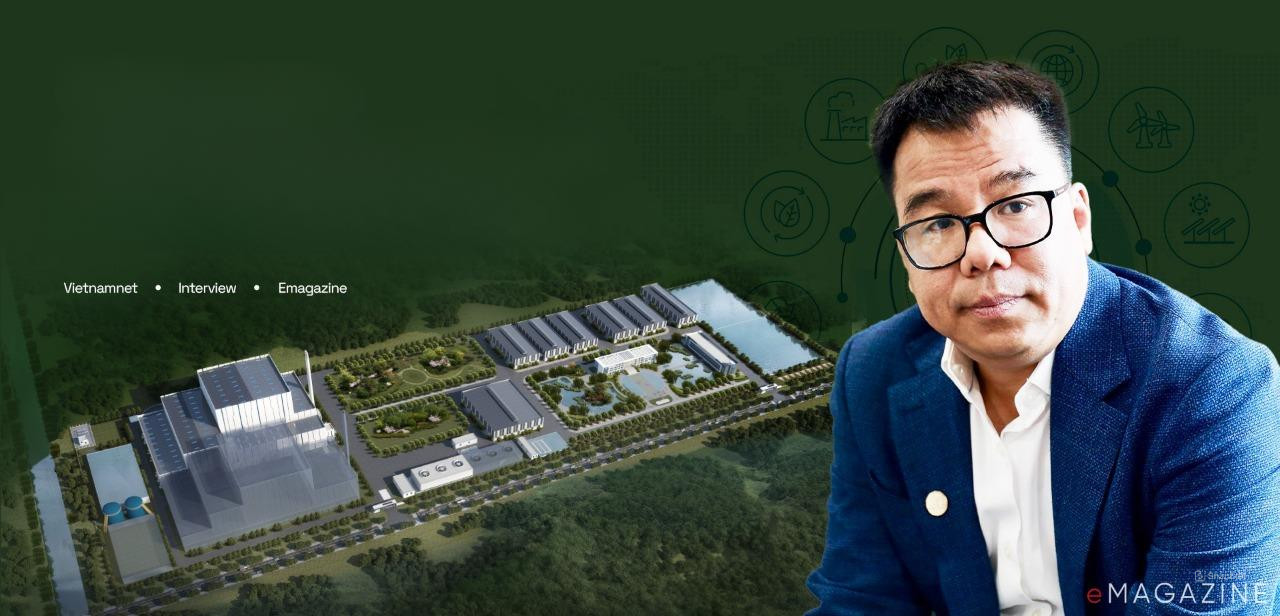
VietNamNet interviewed Pham Minh Tuan, vice president of Bamboo Capital, about its WTE project.
Why did BCG Energy decide to invest in an WTE project at this time?
BCG Energy, a subsidiary of Bamboo Capital, is moving ahead with the building of a WTE plant in Tay Bac Solid Waste Treatment Complex in Cu Chi district in HCM City. This is a key project we have taken over from Tam Sinh Nghia Investment and Development JSC, which marks a milestone in our strategy on investments in the renewables sector, together with wind and solar power.
Why WTE? You may know that all large cities are facing problems in waste treatment. HCM City, Hanoi, Phu Quoc, Con Dao and many other cities/provinces want to develop WTE plants, but they are facing barriers, because local people have rejected the projects.
We want to build a WTE plant that can satisfy the requirements on environmental protection, which won’t affect the activities of local people.
The second reason is that WTE is an attractive business field. The sources of revenue of a WTE project are diverse. In addition to revenue from waste treatment, investors can also make money from selling electricity and carbon credits.
At present, the electricity selling price and waste treatment fee are at reasonable levels based on which investors can design financial models and make reasonable investment decisions.
Third, the government of Vietnam and HCM City city praised WTE projects and said they create favorable conditions for investors to develop WTE.
Burning waste to generate electricity is a modern technology, but toxic and polluting gases may be generated during the process. What will BCG do to avoid causing negative impact on the environment?
It is true that people worry about possible environmental pollution to be created during the waste burning process. However, technologies are getting smarter which solve the problems of unclassified, unprocessed and low calorific waste in Vietnam. In Japan, WTE plants are located near cities, next to residential quarters and adjacent to crowded areas. This is because Japan used advanced technologies with closed treatment process.
I had the chance to visit WTE plants in Japan. Almost nothing is discharged into the environment during waste treatment, while emissions are within the permitted level.
China, a populous country with conditions similar to Vietnam’s, has also been applying WTE technology in the last 10 years.
BCG has considered various technologies in order to choose the best and most suitable for its projects.
What is the biggest problem when developing a WTE project?
When deciding to set up a WTE plant in Cu Chi, we met the city’s leaders to talk about our project. Legally, the project is not listed in industry planning. There is planning about Tay Bac solid waste treatment complex, but there is no planning about WTE. Therefore, municipal authorities need to add WTE to the planning.
To implement our project, it must be listed in the eighth national power development plan (Plan 8). The WTE projects in Can Tho, Hanoi and Hue could be implemented because they were listed in Plan 7. Meanwhile, Plan 8 was just approved on April 1, 2024.
Another problem we are facing is the localities’ requests to have technologies assessed before approval. This may affect the feasibility of projects. If a project must have its technology approved at the licensing time, investors will have to rely on suppliers. If suppliers know that the project will have to use their technologies, it will be more difficult to negotiate about price.
Under the current pricing scheme, WTE plants can sell electricity at 10.05 US cent/kwh, or VND2,500. But what if the scheme is no longer applied and investors will have to negotiate with EVN (Electricity of Vietnam), the only wholesale buyer, about prices?
Policies need to be stable and reasonable, while expected profitability should be attractive enough to encourage investors to invest in WTE, or investors will stay out of WTE. If so, most WTE plants will be developed by Chinese investors, who have major advantages.
WTE plants require huge capital. The project we are developing, for example, has investment capital of VND5 trillion for the first phase with capacity of 2,000 tone per day.
How much is ‘attractive profitability’?
The profitability rate should be 10-12 percent. This is a reasonable figure for any investment type.
Luong Bang - Tien Anh